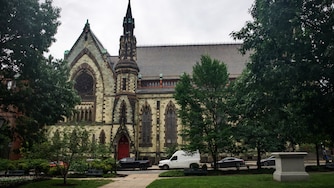Remembrances of Jimmy Carter will undoubtly lead to a reappraisal of a number of underappreciated aspects of his presidency. One that hasn’t gotten much attention — and one in which Baltimore played a role — is his focus on urban policy that is arguably unmatched before or since.
When Georgia Gov. Carter was campaigning for the presidency in the spring of 1976, I was Baltimore’s commissioner of housing and community development. A mutual acquaintance, who was working for the Carter campaign, called and asked if I would give Carter a tour of the city’s development efforts and then stand with him while he delivered details of his urban policy outside the home of Betty Hyatt on the corner of Broadway and Baltimore Street in the Washington Hill urban renewal project. Betty was the chair of the citizen planning committee. I was told the candidate had chosen Baltimore to deliver his message because it was his view that Baltimore was a national model for urban revitalization. The tour happened and the policy was announced.
After the election, I had the privilege to serve as assistant secretary for community planning and development under Carter’s amazing Housing and Urban Development Secretary Patricia Harris. In that capacity for four years administering billions of dollars of programs, I was closely involved in three important initiatives for which the former president gets little or no credit.
First, I was asked by President Carter to represent the administration before Congress to push for legislation to create a grant program for distressed cities and urban counties that would produce jobs and taxes for these localities. That resulted in the enactment of the Urban Development Action Grant program at $400 million a year, to be administered by my office at HUD. We drafted regulations that produced a numbered ranking based on such factors as distress of the city, private funds leveraged, jobs produced, new city taxes, etc.
This objective ranking prevented political or other interference with the awards, resulting in a clean bill of health from several congressional investigations looking for favoritism or corruption. David Cordish, a fellow Baltimorean, was persuaded to leave his private business and come to Washington to run the program. This Carter initiative, ended during the President Ronald Reagan administration, has been repeatedly described as the federal government’s most successful urban economic development program.
Second, the president asked me to prepare the first, and to date, only federal urban policy, which includes many urban initiatives, foremost of which was a process to evaluate all federal policies to determine their impact on cities and a priority for locating all new federal facilities where possible in a distressed city.
Under that policy, the administration identified the need to reduce the segregation of low-income African American people in distressed cities. Therefore, our office at HUD awarded public housing rent certificates to regional authorities to enable those with young children and living in areas of concentrated poverty to move out of their city to more affluent areas with low crime and better schools. Again, this dramatically successful racial and poverty de-concentration program was ended under President Reagan.
President Carter is famous for spending most of his life — including his post-presidency — in the small, agricultural town of Plains, Georgia. But while he was in office, his commitment to the nation’s cities was unparalleled. Baltimore and so many other American cities would be immeasurably better off if his policies had stayed in place.
Robert C. Embry Jr. is president of the Abell Foundation.



Comments
Welcome to The Banner's subscriber-only commenting community. Please review our community guidelines.